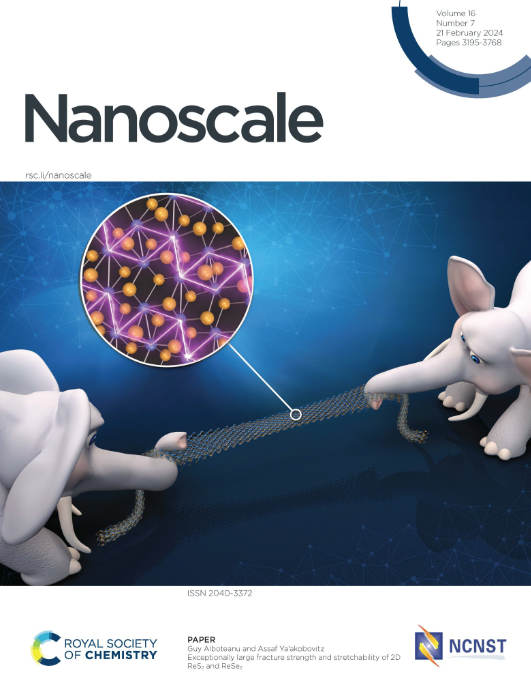设计构建两种新型原子精度三维和二维 Ag12 簇组装材料
IF 5.8
3区 材料科学
Q1 CHEMISTRY, MULTIDISCIPLINARY
引用次数: 0
摘要
银簇组装材料(SCAMs)是一种定义明确的晶体扩展材料,其特点是具有独特的几何结构、原子精确的可设计性和功能模块化。银簇组装材料的精确结构特征与其独特的功能有着内在联系,了解这种关联有助于优化其性能和预测其行为。在本研究中,我们首次报道了在三叉连接体 TPMA 的帮助下,通过组装 Ag12 簇节点,合成了 (3,6) 连接的三维 (3D) SCAM [Ag12(StBu)6(CF3COO)6(TPMA)6]n(命名为 TUS 6),TPMA=三(吡啶-4-基甲基)胺。此外,我们还制备了一种二维(2D)SCAM,即[Ag12(StBu)6(CF3COO)6(TPEB)6]n(描述为 TUS 7),TPEB = 1,3,5-三(吡啶-4-基乙炔基)苯,它是通过将 Ag12 节点与三叉式连接体 TPEB 网状连接而制备的。这项工作强调了有机连接体的柔韧性在决定 SCAM 空间扩展结构及其特性方面的影响。通过显微镜和衍射分析,SCAMs 揭示了独特的形态、结构稳健性和相纯度。本文章由计算机程序翻译,如有差异,请以英文原文为准。
Designed construction of two new atom-precise three-dimensional and two-dimensional Ag12 cluster-assembled materials
Silver cluster-assembled materials (SCAMs) are well-defined crystalline extended materials hallmarked by their unique geometric structures, atomically precise designability and functional modularity. The precise structural features of SCAMs are intrinsically linked to their unique functionalities, and understanding this correlation helps in optimizing their performance and predicting their behavior. In this study, we report for the first time the synthesis of a (3,6)-connected three-dimensional (3D) SCAM, [Ag12(StBu)6(CF3COO)6(TPMA)6]n (designated as TUS 6), TPMA=tris(pyridine-4-ylmethyl)amine by assembling Ag12 cluster nodes with the help of a tridentate linker TPMA. Besides, we also prepared a two-dimensional (2D) SCAM, [Ag12(StBu)6(CF3COO)6(TPEB)6]n (described as TUS 7), TPEB = 1,3,5-tris(pyridine-4-ylethynyl)benzene by reticulating Ag12 nodes with tridentate linker TPEB. This work highlights the influence of flexibility of organic linkers in dictating the spatially extended structures of SCAMs and the properties arising thereof. Characterized by microscopic and diffraction analyses, the SCAMs revealed distinct morphologies, structural robustness, and phase purity.
求助全文
通过发布文献求助,成功后即可免费获取论文全文。
去求助
来源期刊

Nanoscale
CHEMISTRY, MULTIDISCIPLINARY-NANOSCIENCE & NANOTECHNOLOGY
CiteScore
12.10
自引率
3.00%
发文量
1628
审稿时长
1.6 months
期刊介绍:
Nanoscale is a high-impact international journal, publishing high-quality research across nanoscience and nanotechnology. Nanoscale publishes a full mix of research articles on experimental and theoretical work, including reviews, communications, and full papers.Highly interdisciplinary, this journal appeals to scientists, researchers and professionals interested in nanoscience and nanotechnology, quantum materials and quantum technology, including the areas of physics, chemistry, biology, medicine, materials, energy/environment, information technology, detection science, healthcare and drug discovery, and electronics.
 求助内容:
求助内容: 应助结果提醒方式:
应助结果提醒方式:


